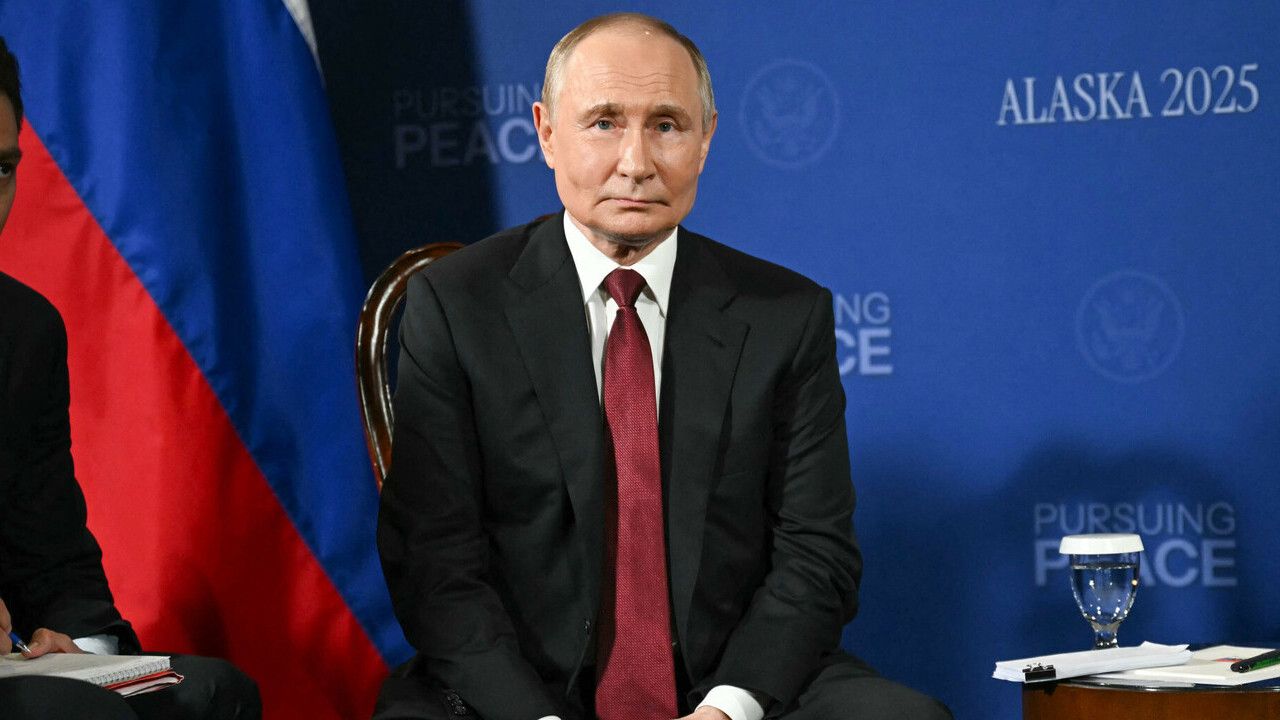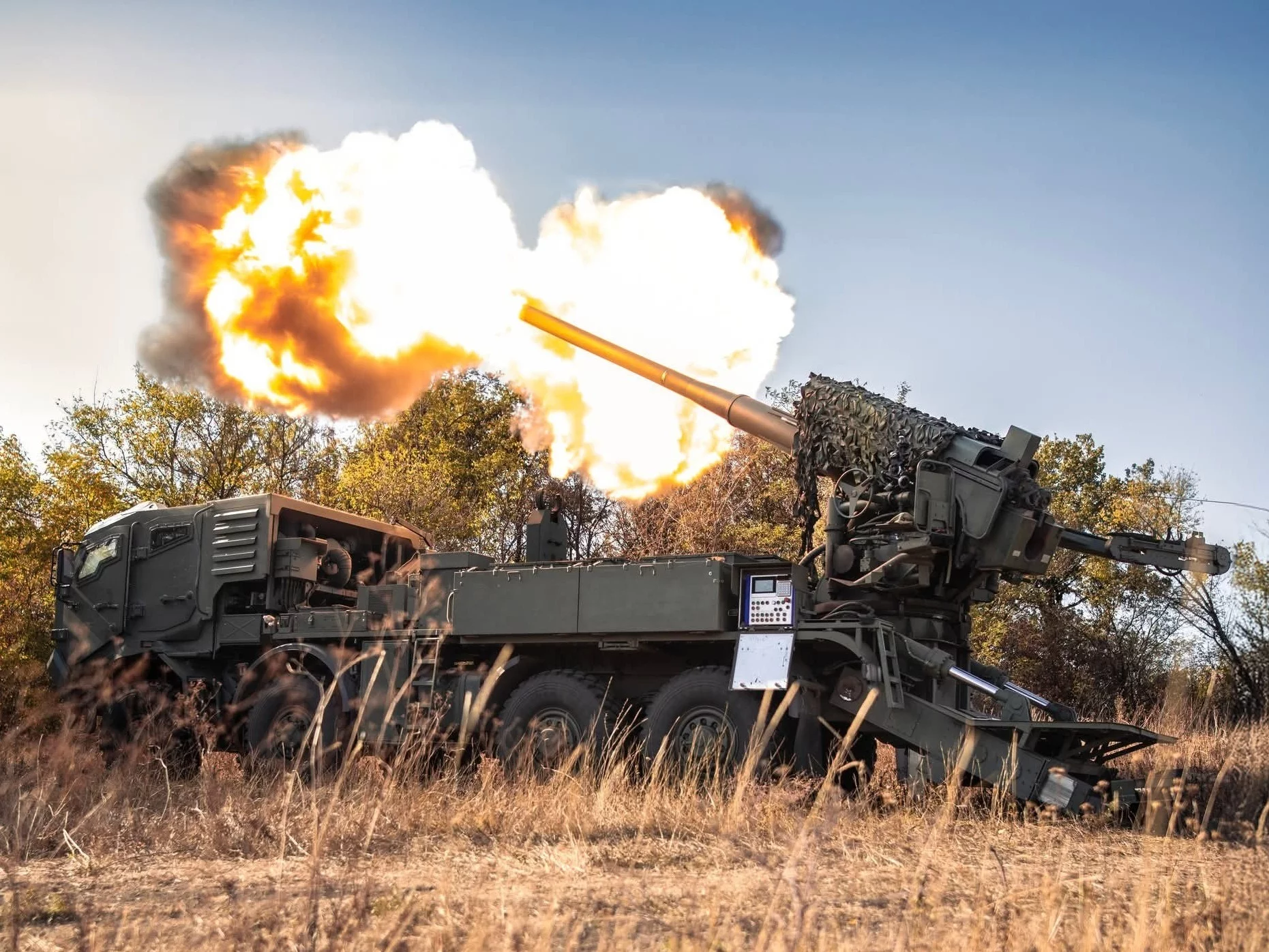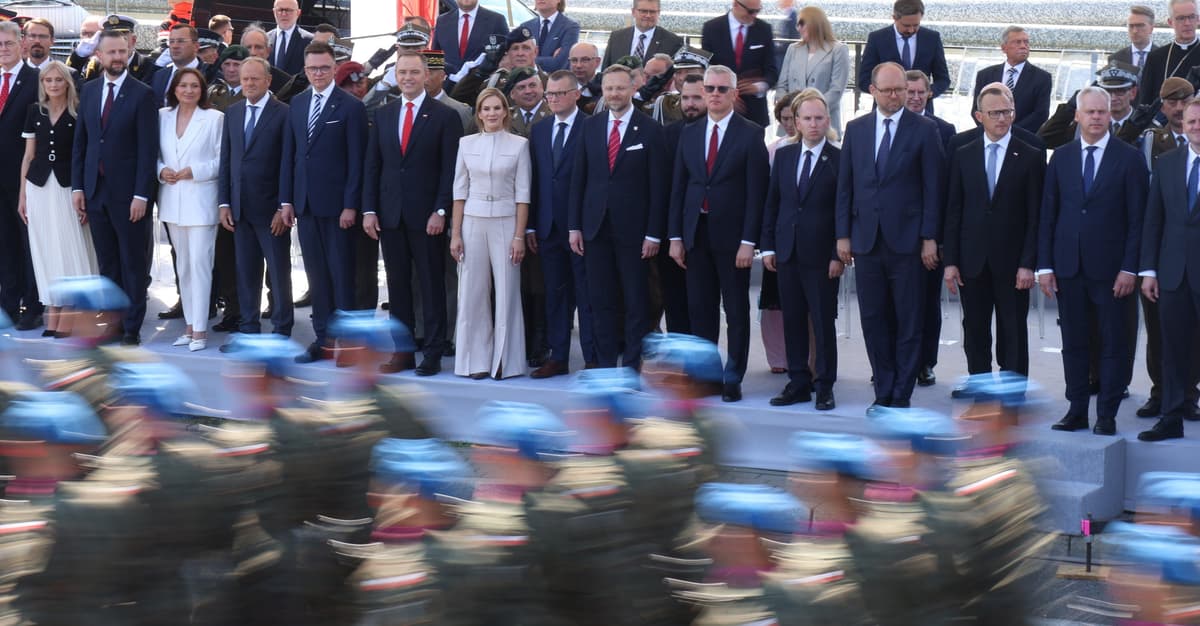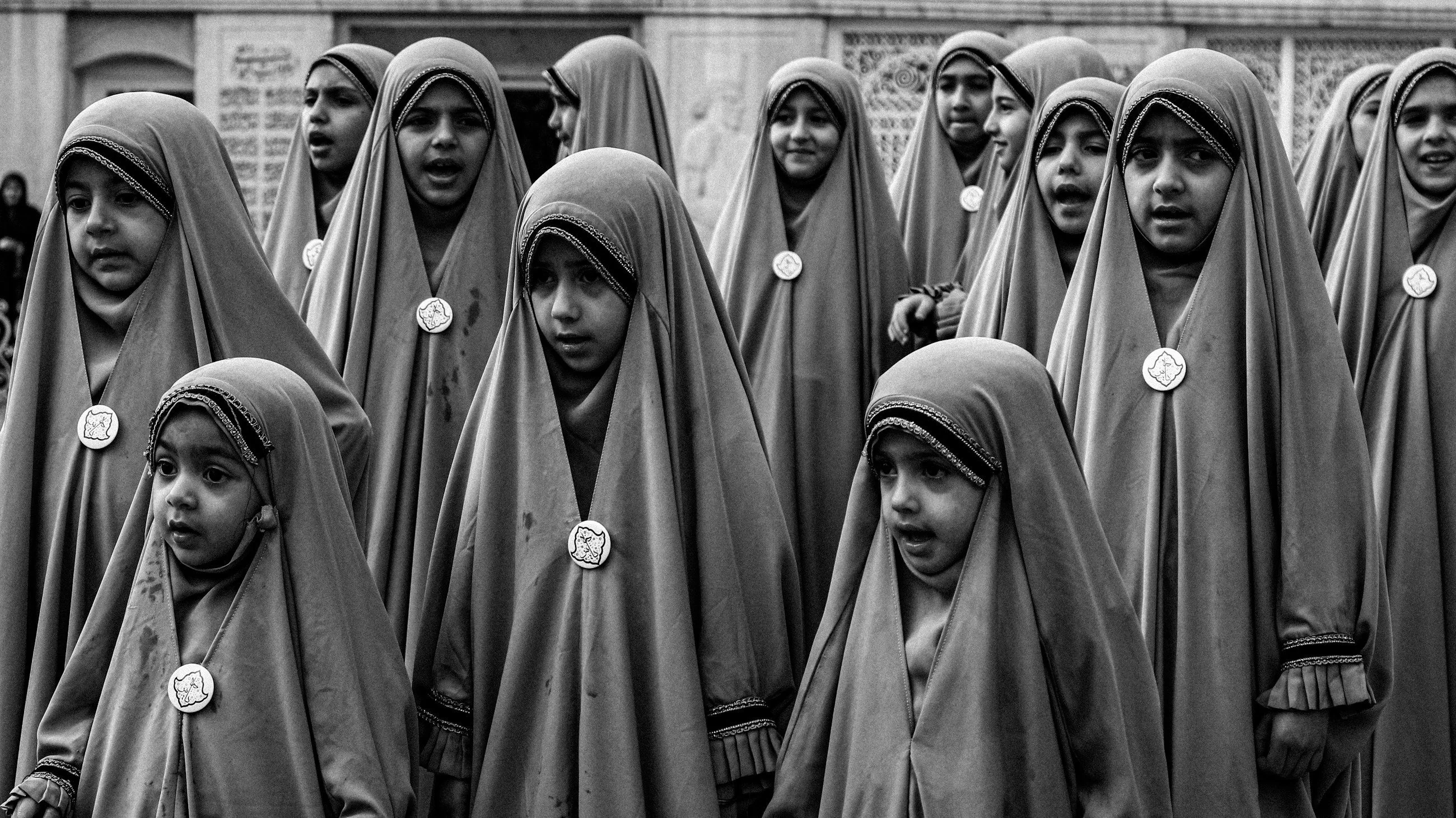A ellipse in a bag. 1252nd Day of War


The Russians importantly deepened and widened the breach to the north and west of the Pokrowsk–Constantinówka road, resulting in the full pokrowska agglomeration being placed in the bag. To both main routes of supply of defenders in northern and western directions remains the aggressor little than 5 km, which makes logistics very difficult. While, after the Ukrainians moved it from the western direction to the northern Russians, they temporarily halted the attack on the road from Pokrowska to Dniepr (actions in this direction have been resumed in fresh weeks), they proceed on the road to Kramatorska, from which they are separated by 1 village – Rodynske. The local road remains to defenders, but it does not have the capacity to keep a long-standing, organized defence and is besides threatened by the enemy (Russians are 7 km south of it).
With the advancement of flanking the Pokrów agglomeration, invaders approached the borders of Pokrowska and Myrnohradu from the south, and to both cities there are further Russian diversional-opportunity groups. After taking fresh Economics (July 25), they besides gained the chance to enter Myrnohrad from the north east. The question is whether the Ukrainian command will make forces and measures to effort to counter-attack and thus remove the supply lines of the agglomeration defenders, or, in the event of their inability to assemble or neglect to compete, decide to retreat from the no longer major military importance of Pokrovska and Myrnohradu (the rank of the main logistics hub of the Ukrainian group west of Donetsk Pokrowsk lost in autumn). Kiev's decision to keep the agglomeration without its prior unblocking threatens to repeat the last weeks of the Bachmut fight, in which the losses on the defender's side grew.
Russian forces systematically displace defenders from the last positions in the Donetsk Oblast between Pokrowski and Welyka Nowosłówka. Under Ukrainian control, there were 4 localities at the border with the Djepropetrovsk circuit in 3 different locations. In the next place, the Russians crossed the border of the Djepropetrovsk region (according to any sources, they occupied the village of Malijiwka), as well as the Zaporoski (the aggressor was to pass Temyriwka under control). In the latter, they captured Kamjanske over Dnieprem and proceed to approach north along the road to Zaporozhye, where the main component of the next line of Ukrainian defence is Stepnohirśk.
Ukrainian troops withdrew from the bag west of Torećek, where they maintained the village Szczerbyniwka and thus prevented Russian forces from taking full control of the city. However, the advancement of the aggressor on the wings toward Constantinople threatened the defenders there by cutting off from the remainder of their forces. Ukrainians are only surviving on the northwest outskirts of Torećek. After respective weeks of fighting, the Russians occupied Jablonivka, which opens the way for them to Constantinówka from the south-west.
The Russians carried out an attack in the direction of Siewiersk, utilizing armored and mechanized speakers for the first time in respective months. It was most likely intended to identify the situation on this 1 of the most hard for invaders (due to the extended Ukrainian defence) and at the same time 1 of the most unchangeable sections of the front. The Russian advance to the northeast of Siewiersk, indicating a gradual weakening of defence, undoubtedly encouraged the organisation. Following the fast detection of the group by Ukrainians, the action continued 1 column – according to any sources it reached the east outskirts of the city and then withdrew with crucial losses. However, under the force of the aggressor Ukrainian forces left part of the position east of Siewiersk, which enlarged the area of no man's land.
The Russian troops winged the Cup from the north west. According to any sources, they besides went to the city from the north, and on the outskirts there are fights. The advancement of the aggressor straight threatens the provision of Ukrainian forces remaining on the east bank of the Oskoł River, for which Kupansk is simply a direct logistical facility. Further land captures, inactive unchanging the overall situation, the Russians besides gained northeast of Lyman. Ukrainian forces regained control of Kindrativka north of Sumwhere they managed to slow down the aggressor's progress.

The Russians have intensified the demolition of energy infrastructure in the Sumi region. Periodic cut-off of power supply to Sum and surrounding towns took place on 23, 26 and 27 July. The targets of hostile drones were besides the circuit military administration in Sumach (26 July) and 1 of the local military replenishment commands (28 July).
The main mark of Russian rockets and drones remains the logistics of defenders in the perimeters in the back of the front. Impacts on industrial facilities occurred in Krzywy Horn and Kramatorsk (23 July), Dniepra (July 26, 3 civilians died and six were injured) and in Kharkov (July 26 and 27). Railway infrastructure suffered in the połtawski and sumi territory (February 23) and in Odessa (July 24), where the port was besides attacked and falling shrapnel destroyed the historical marketplace hall Prywoz. This city was hit again on July 27. The hits of enemy rockets or drones in another facilities were besides reported from Cherkas (24 July, 12 civilians were injured), Nicholasov (24 July), Zaporoża (24 and 27 July), Kropywnicki (28 July), Kiev (28 July, 8 people were injured) and Kamieński in the Djepropetrowski circuit (29 July, 2 people died and 5 were injured). Ukrenerho confirmed that on 24 July 1 of the thermal plants was hit, but the location of the facility was not indicated.
The strikes of Russian guided air bombs (KAB) resulted in demolition of residential and utility facilities in Kharkov and civilian casualties. On July 24, 42 people were injured, and the following day – 17. A crucial number of victims were struck by KAB at the Biłenke Penitentiary in the Zaporo region – 17 people were killed and 42 wounded.
On 28 July, the Russians conducted a massive attack on the airport of the Old Constantines – the main base of the Ukraine Air Force. Fires broke out on her land, but there are no reports of further effects. According to the Ukrainian Air Force Command (DSP) utilized by Russians hypersonic missiles Kindzarz were not meant to hit their targets. A full of 887 impact drones and their imitations, along with 49 ballistic and maneuvering missiles, were to be utilized by invaders from July 22 to morning 29. The DSP has again changed its way of informing about Russian attacks and since 24 July it has given a collective number of unmanned people who have not caused harm – shot down, disrupted by radio-electronic combat and locationally lost. A full of 791 drones were to be neutralized and 14 to 21 rockets were to be shot down.

Ukrainian drones hit rail infrastructure and energy facilities in the Rostov and Volgograd circuits. The targets were the station and power station in Nowoczerkask (23 July) and railway facilities, including the power substation, in Salsk (29 July), where fires were recorded, as well as the railway power substation in Oktiabrska (27 July). As a consequence of the attack on energy infrastructure in occupied Donetsk (28 July) there was a temporary cut-off from the energy supply of 155 1000 subscribers in the Donetsk agglomeration (also in Makieevka and Jasynuwat). Ukrainian unmanned vehicles besides hit a fuel base in the Sochi airport area (24 July), powder-producing plants in Kotowsk in the Tambów Oblast (25 July) and radio stations "Signal" in Stavropol, but there is no information whether these attacks have produced tangible results. According to Russian sources, Ukrainians utilized more than 200 drones per day in hits on FR territory 3 times (23 July to shoot down 256 unmanneds, the following day – 217, and 26 July – 257), and were besides occasionally to usage Neptune maneuvering missiles. On average, targets in Russia are expected to attack up to 100 Ukrainian drones a day.

On 23 and 24 July, the U.S. Department of State issued 4 approvals for the transportation of equipment, spare parts and repair and maintenance services to Ukraine with a full value of $652 million. These include HAWK Phase III short-range air defence systems (172 million dollars) and M2A2 Bradley combat infantry wagons (150 million dollars) including air defence packages (180 million dollars) and 155 mm M109 self-propelled Haubice (150 million dollars). Bradleye and M109 are to be repaired in European refurbishment facilities (no circumstantial state is indicated), and work on HAWK Phase III systems will require a temporary American mission in Ukraine. The funds for these purposes were granted under the Ukraine safety Support Initiative (USAI) for the presidency of Joe Biden.
As part of the US financial support until the end of this year. Ukraine is to receive 33,000 drones with artificial intellectOn 27 July, Auterion informed the American-German company. The Pentagon has a $50 million contract with her. Kiev will besides receive further TRML-4D radiolocation stations and SPEXER 2000 3D MkIII radars (for IRIS-T and Oerlikon Skyranger 30 rocket systems respectively). On July 24, the German company Hensoldt praised the contract for their transportation worth 340 million euros. It had previously provided 16 TRML-4D radars (including 8 IRIS-T SLM sets), of which at least 1 was destroyed. The Ukrainian Army besides received 1,300 drones from Latvia. This was notified on 22 July by Defence Minister Andris Sprūds, stating that this is part of the previously announced supply of 12 000 unmanned workers worth EUR 17 million.
On 26 July, the Minister of Defence of Lithuania Dovilė Šakalienė announced the readiness to fund the acquisition of patriots of EUR 30 million. According to president Volodymyr Zelenski Kiev, he is to hold talks about financing further purchases with Holland, among others. The transfer of the next 2 Patriot batteries from the Bundeswehr equipment Minister Boris Pistorius made them dependent on their replacement by fresh ones – obtained from the United States over a period of six–eight months.

On 23 July, the Ukrainian military intelligence press service stated that Russian peculiar Services and Propagandists “are diligently and thoroughly investigating the situation in Ukraine to exploit protests” related to the adoption of the Anti-corruption Authority independency Act "to challenge the Ukrainian State's ability to argue Russia's full-scale armed aggression". According to Ukrainian intelligence, Moscow intends to discredit the authorities in Kiev in this way to weaken the support of the West or completely deprive it. The message warns that the Kremlin is considering utilizing social dissatisfaction to maximise the political situation and destabilise the state, and that it will scope for the available means of impact, in peculiar information. It has not been ruled out that Russia can carry out active provocations in order to deepen polarisation in Ukrainian society (see more about this). Ukraine: Elimination of the independency of anti-corruption services against affront at the top of power).

On 23 July, another ninth phase of prisoner exchange took place.as part of the peace negotiations on the end of the war in Istanbul since June (see besides Russian-Ukrainian talks in Istanbul: no progress). The concrete number of people released from captivity was not made public, but president Zelenski announced in his entry on social networks that "at all stages of the fresh Istanbul agreements we have managed to bring in over 1,000 of our prisoners." On 28 July, Deputy Head of the Coordination Staff for Proceedings with the Prisoners of War Major Andrij Jusov stated that since the beginning of the full-scale Russian invasion in Ukraine 66 exchanges have been carried out, thanks to which 5857 Ukrainian citizens have been released from Russian captivity.

On 29 July, the safety Service of Ukraine (SBU) informed about the fresh tactics of Russian peculiar services consisting in recruiting Ukrainian residents under the pretext of performing tasks for SBU. This is demonstrated by fresh cases of prevention of attacks in the territory of that country: On 24 July, SBU officers were to detain a female while attempting to leave explosives in 1 of the cafes in the centre of the capital, and on 29 July in Donbasa, a veteran of the war, who was to kill the commander of the 108th Battalion of the Armed Forces of Ukraine “Wilki da Vinci” Serhij Filimonov. In the first of these cases, an assassination effort aimed at blowing up the premises and killing as many people as possible was to be carried out by a citizen of Kiev, whom the occupiers recruited under the ‘foreign flag’, convincing that the task had been commissioned by the SBU. A akin argument for cooperation was to be persuaded by the second of the attempted assassins to shoot an officer of the Armed Forces of Ukraine utilizing a weapon left in the box by FSB agents. Both detainees were to be persuaded to cooperate by the necessity to destruct traitors.

On 21 July, during a gathering with the diplomatic corps, Head of Military Intelligence of Ukraine Kyrylo Budanow announced that By 2036, Russia intends to allocate $1.1 trillion for military purposes – this will be the largest reinforcement program of the Russian Federation since the dissolution of the USSR. According to him, 2 fresh military districts – Moscow and Leningrad – have already been designated as part of these preparations, and the creation of fresh divisions and units is besides planned. "There is simply a full mobilization of politics, the economy and society in Russia to prepare for the future large-scale war," he said.
The Times weekbook published July 24 material on the subject of forcing children abducted by Russia from Ukraine to participate in the war after they were 18. The authors of the text noted that mobilizing young Ukrainians to fight on the front to address the shortage of personnel in the Russian army and is simply a brutal form of intellectual force on Ukrainians.The head of the Bureau of the president of Ukraine Andrij Jermak agreed with these reports in an interview given to the magazine. According to him, this is the deliberate action of the Kremlin, which seeks to destruct a full generation of Ukrainians. Nathaniel Raymond, executive manager of Yale University Humanities investigation Laboratory, confirmed the authenticity of the charges, stating that This is “probably the biggest case of kidnapping of children during the war since planet War II, comparable only to the Germanization of Polish children by the Nazis during planet War II”. It is estimated that about 35 1000 children were taken from the temporarily occupied regions of Ukraine.
On 27 July, president Zelenski signed a decree approving the decision of the National safety and Defence Council to impose sanctions on more than 90 Russian companieswho cooperate with the Russian military-industrial complex. As he stressed, restrictions were applied to companies extracting uncommon earth metals which are crucial for the production of electronics, guidance systems, engines and drones utilized by the FR Army.










![Nie spodobało się, iż nazwałam się imamką [Rozmowa z Seyran Ateş]](https://cdn.oko.press/cdn-cgi/image/trim=398;0;424;0,width=1200,quality=75/https://cdn.oko.press/2025/08/AFP__20170728__R207J__v1__HighRes__GermanyFranceReligionIslamMosque.jpg)
